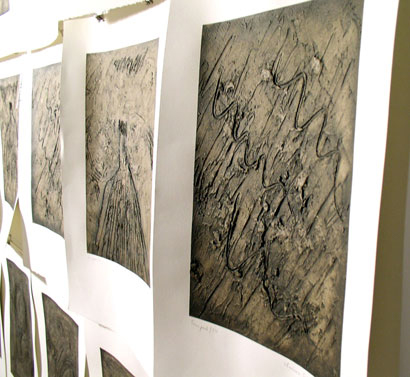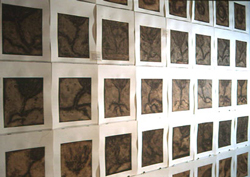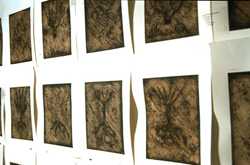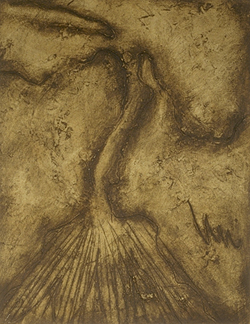Time Lost, Time Regained: 1996-1997
Here I have explored the medium of painting with sculptural components such as the use of wire and textural surfaces. Derived from childhood memories of the rituals of Catholicism, the works are inspired by a nostalgia rooted in reverence and fear.
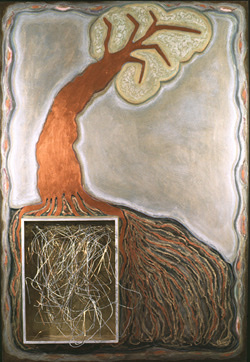


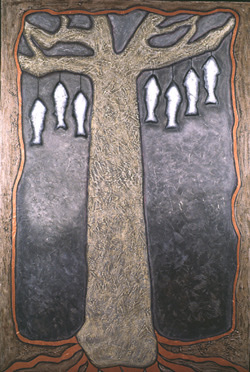
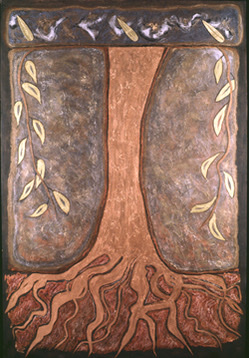

Mounted at Glendon Art Gallery, Toronto, Ontario


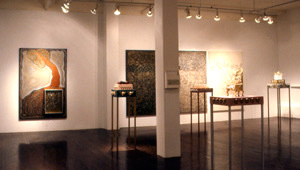
Life’s Fabric: 1998
“The nervous striations and anxious activity of the drawings, seen together with the richly decorated, celebratory reliefs, are indicative of the irreconcilable tensions that persist in the work of artists who have experienced displacement and dislocation. But the fragmentation of experience and cultural and spiritual alienation of these artists often inspire real innovation in the arts. The necessity to make sense of the place of women in patriarchy has inspired this feminist artist to create monuments to both power and beauty.” – Elaine Hujer, 2008
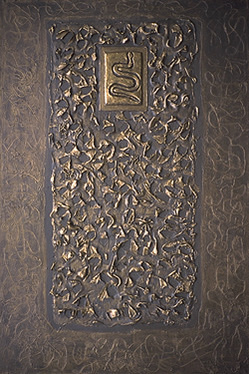


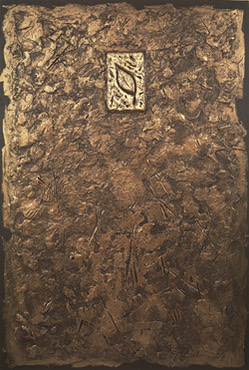

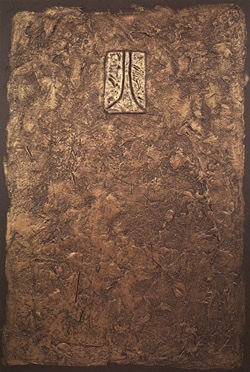
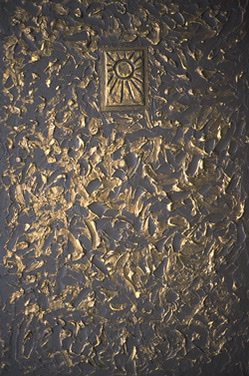
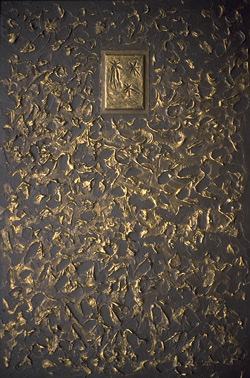

Mixed-media Drawings, 1999, at the Burlinton Art Centre, 2008

Installation detail at the Burlington Art Centre, 2008

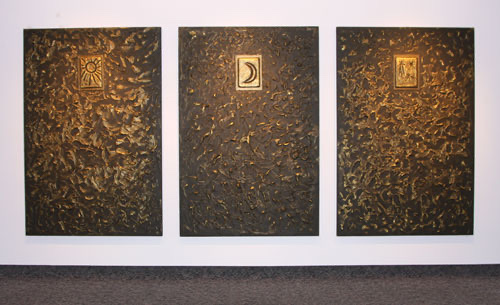
Songs My Mother Taught Me: 1998
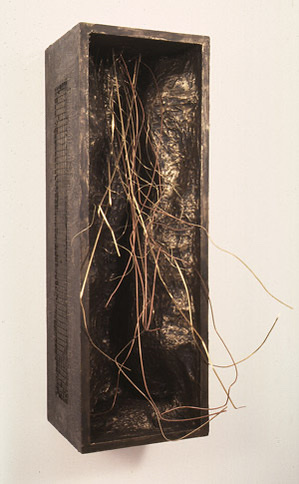
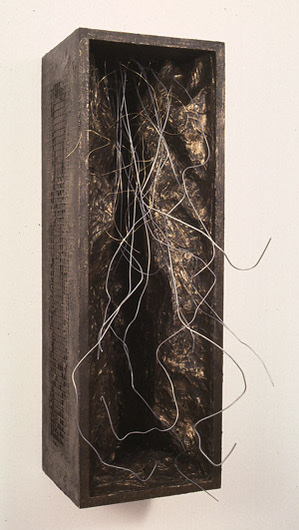
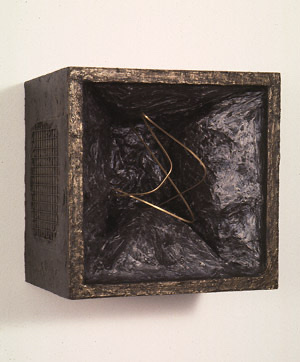
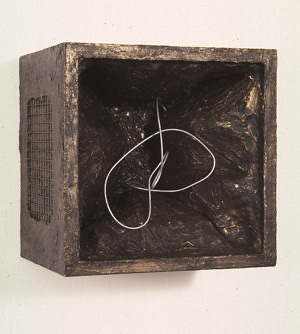
Dominum: 1998-1999
n this work I am addressing aspects of the repressive culture in which I was raised. The title DOMINUM is a Latin word meaning “my lord”, a word I have pronounced thousands of times, when praying on my knees in the churches of my youth. Translated into Hungarian, ‘dominum’ is ‘uram’, the word my mother used to refer to her husband, even though there was another word, ‘férjem’ she could have used to name her partner. By calling my father her lord, she unwittingly placed herself in the position of an inferior. Given her conception of traditional marriage and the ideologies of her time, she deferred to her husband and conferred upon him a status of undisputed power. She never questioned ecclesiastical authority or the repressive social conventions of the patriarchal system that defined her place in society, and put much effort into raising me in the same belief system. Although I began questioning some of the double standards of the church and the traditional family in my teens, imprints of this upbringing have marked my life. Being raised in a culture that was still very Victorian and threatened by women’s sexuality and assertiveness, often meant being socialized to be passive (non-questioning, no initiatives), quiet (the more one could negate life energy, the more corpse – like the better), modest (without personal ambitions and putting others first), and chaste (ignore, negate, sublimate sexuality, be ashamed of it). In the fairy tales of my childhood, only a prince’s kiss – the acquisition of a husband – could give meaning to the otherwise purposeless life of a woman since she was deemed capable only of nurturing others and maintaining a household.
DOMINUM consists of seven identical panels to be hung with spaces of approximately 8cm between the panels. In mystical terms seven means completeness, here it is also the number of letters contained in the word DOMINUM. First, to each panel I fastened a wire mesh cut in the shape of a simple leaf. These were then placed on the panels in different directions moving from left to right like the hands of a clock, to imply the passage of time and a dynamic energy. I then cut an opening in the middle of the leaf shapes and stuffed them with steel wool in order to make them three-dimensional. The shapes resembled the vulva; the opening, a gaping wound. I covered the wire mesh with pariscraft and layers of modelling paste, handled in a manner that emphasizes the sexual connotations. I then cut seven pieces of cord and made various configurations with them to form the leaf stems. Though serpent or phallus like, they are deprived of their power by being placed in this subordinate position. The female component has been transformed and elevated, and that denoting the patriarchal and ecclesiastical systems minimized, signifying a personal reclamation of the female body.
I spread a thin layer of modelling paste on the panels forming the ground, with only a few markings, one of them being the shape of a crucifix. Into the flesh of the leaves I engraved twig-like shapes that read like the “veins” of the leaves. These grooves are black as in coagulated blood and look like the decorative motifs of Hungarian folk art. This is an allusion to both ancient rituals of ornamentation as well as the ritual of embroidery (a useless middle-class occupation allowing one to indulge in guilt-free daydreaming while one’s hands are being kept busy.) In the bottom right corner of each panel I stamped a single letter to form the word DOMINUM.
The ground has been painted with a diluted raw umber oil paint and made to resemble old parchment, a suggestion of the historical past. On the panels I first painted a dark rim that I later partially erased, similar to the black borders of death notices in use until the 1950s. Fittingly, this work grieves for the lost potential of the body, while also asserting its creative aspect. The leaves were painted a dark grey, varnished, then several hundred dressmakers’ pins were poured onto the strips of magnets placed in the gaping “wounds.” Although initially I meant to have wire protruding from the “wounds”, when I tried the look of pins they seemed more fitting. The vulva defined me as a woman, and the household implements my place in the family hierarchy for decades, first as a daughter, then as a wife and mother. The pins imply the domestic ritual of the rounds of daily chores. Like housework, they have little value, but also sparkle with aggression and a repressed sexual, life energy. (I have used pins in former pieces of the Fairy Tales Series, 1994 as well as Ismétlés, 1979-81.)
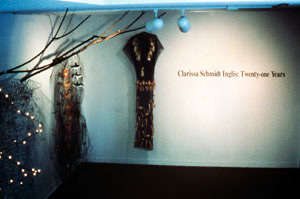
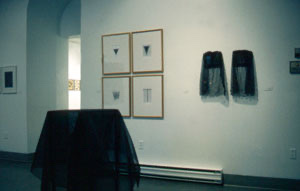
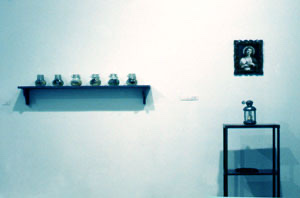

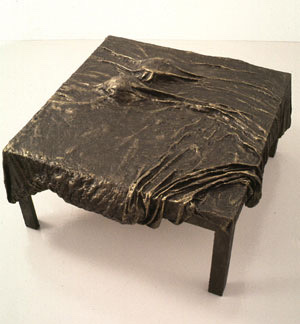
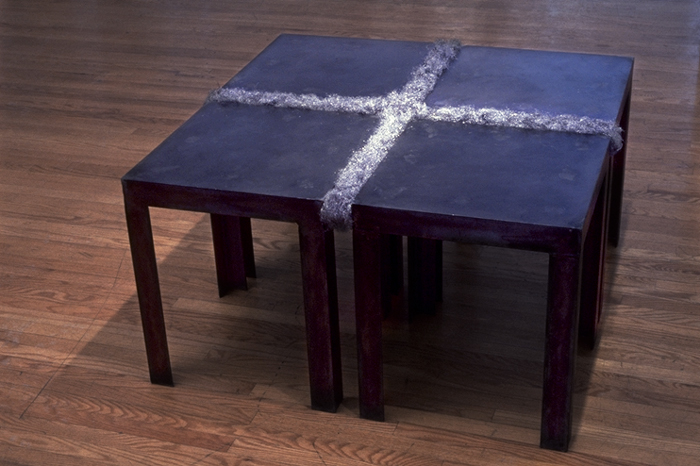
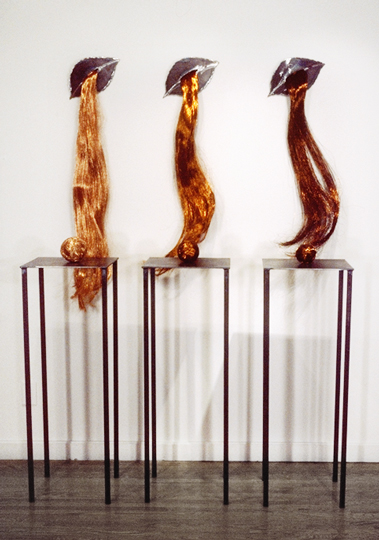
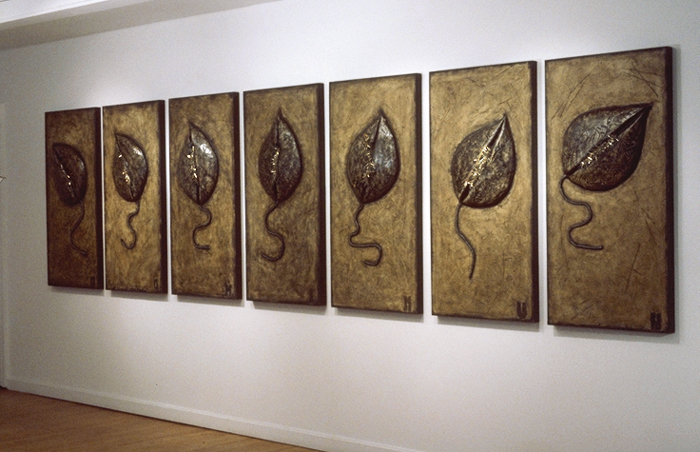
Rootage and Tempest Drawings, 1999
This series of mixed media works on paper, Rootage and Tempest, further develop the tree and root motifs first explored in 1997. Exhibition installation entitled Drawings at the Hamilton Artists Inc’s Third Space in 2004.

